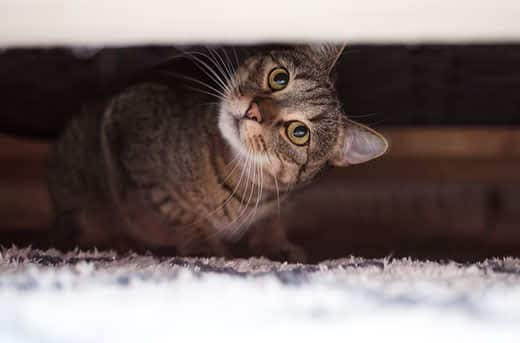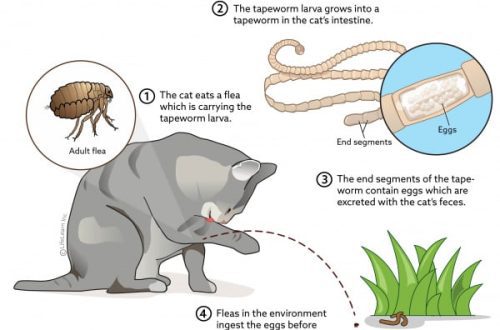
Bii o ṣe le rii ologbo ile: Awọn imọran 6 fun awọn oniwun
The fear of losing your pet is familiar to every owner, and in reality no one is immune from such a situation. Unfortunately, cats sometimes get lost. Can a cat return home if it ran away? The good news is, yes, they often find their way home on their own. But the right actions to find a pet will help speed up the meeting.
Some useful tips on how to find a cat on the street, below.
Awọn akoonu
1. carefully check your house
Sometimes cats hide at home. Before looking on the street, you need to check everything
pet’s favorite hideouts. “Lost” cats are often found in places like children’s playhouses, baskets with lids, and even suspended ceilings. Unlike dogs, cats rarely respond to the name, but you should still try to call your pet in a quiet, affectionate voice. Pets can sleep up to 20 hours a day, and if the cat finds a secluded place, she may well lie down there in a long hibernation. It’s not uncommon for pets to end up locked in closets or isolated spaces, including garages and under cars, so don’t give up hope of finding a pet in the house too quickly.
 2. Search in your area
2. Search in your area
Many cats, including those who are allowed outside, do not stray far from home. This also applies to animals that do not leave the house and live in more limited spaces. In a study published in the journal Animals, scientists found that most cats that go outside do not move more than 500 meters from the house. The search should begin with the surroundings, combing the yard around the house and checking all the bushes, trees and outbuildings. You should go around the houses in the district, talk with the neighbors. You can also paste a photo of the pet, which clearly shows the muzzle, torso and color. Ask neighbors for permission to check their garages, yards, sheds, and other outdoor structures.
3. Expand the search perimeter
After searching the area, you need to go to neighboring areas. Posters and leaflets are still effective tools. You should include a recent photo of your cat, your contact information, and a simple phrase such as “Missing cat” or “Help, cat ran away” to grab people’s attention. Pets that are accustomed to freely leaving the house and returning there on their own may become curious and move out of their usual territory. There is no need to worry: the likelihood that other people will notice a pet on the street and notify the owner is quite high. Since many lost animals end up in shelters and veterinary clinics, visit as many of these places as possible, including your local animal control department. They can also leave leaflets and provide information about the cat.
Today, more than ever, cat owners rely on the internet to find their missing pets. It is worth publishing information on your pages on social networks and posting in groups along with fresh photos. Online resources allow you to post more information, so you can mention details, such as a particular word or phrase that it will respond to. Some owners offer cash rewards to those who find their pet. But you need to be vigilant – information about rewards in public forums can attract the attention of potential scammers. It is better not to indicate the exact amount and not advertise the reward, but simply give it to the one who finds the lost one. Perhaps this person spent some money on feeding and sheltering a pet, and would be grateful for such a gesture.
5. Use personal items
The sense of smell of cats is 14 times better than that of humans. Therefore, it is a good idea to leave items on the porch or in the yard that may attract the cat, such as clothes that the owner has worn but has not yet washed, or her favorite blanket. You can also lay out food for a lost pet. However, this can attract many uninvited creatures that will only scare away the pet. RSPCA Australia suggests spreading your cat’s favorite treats around the house next to an open window or door and “waiting patiently”. This is a key part of the process.
6. Get a surveillance camera
You can install an outdoor surveillance camera in the yard to see if the cat is walking around the house, trying to get inside. Or buy a special camera for monitoring pets and wildlife, but a standard home security camera is fine. Another option would be to use a baby monitor, many of which have a video display. The base can be placed at the front or back door and keep the monitor close at all times. Or maybe the neighbors have CCTV cameras? You can ask them to check their camera footage and report if they spot a cat.
 How to stop a cat from running away
How to stop a cat from running away
An effective way to keep a cat at home is castration or sterilization. After this procedure, the desire of the animal to go outside is significantly reduced due to the loss of the mating instinct. Another way to return a lost pet is to install a microchip and use a collar with an address tag, which contains the contact details of the owner. This is important for purely domestic cats as well, because they can still sneak away.
In general, keeping a cat exclusively at home significantly reduces her chances of getting lost. It also protects the cat from dangers such as speeding cars, viral infections, parasites, poisonous plants and other animals, the Pet Health Network explains.
So that the cat does not get bored of sitting at home alone all day, you need to provide it with educational toys and entertainment. For example, puzzle feeders, game towers, and even television programs for cats. If possible, you can leave curtains and blinds open so that your furry pet can observe what is happening outside from a safe distance.
Don’t give up too soon
After some time of fruitless searching, the owners begin to lose hope, but you should not stop trying. We need to tell everyone about it: “I still can’t find my cat. My cat ran away!” to remind others that the pet is expected at home. Up to 56% of lost cats are found within one to two months, according to the Animals study. At the same time, both domestic and street cats are often found near the house. Cats like to hide in tight and dark places, especially if they are not feeling well, so look in every nook and cranny and use a flashlight.
If the search took place mainly during daylight hours, you can conduct them at dusk and at dawn, when the cats are most active.
Most importantly, stay positive and keep looking! Losing a pet is a lot of stress, but take comfort in the fact that most lost cats are happily reunited with their loved ones.



 2. Search in your area
2. Search in your area How to stop a cat from running away
How to stop a cat from running away

